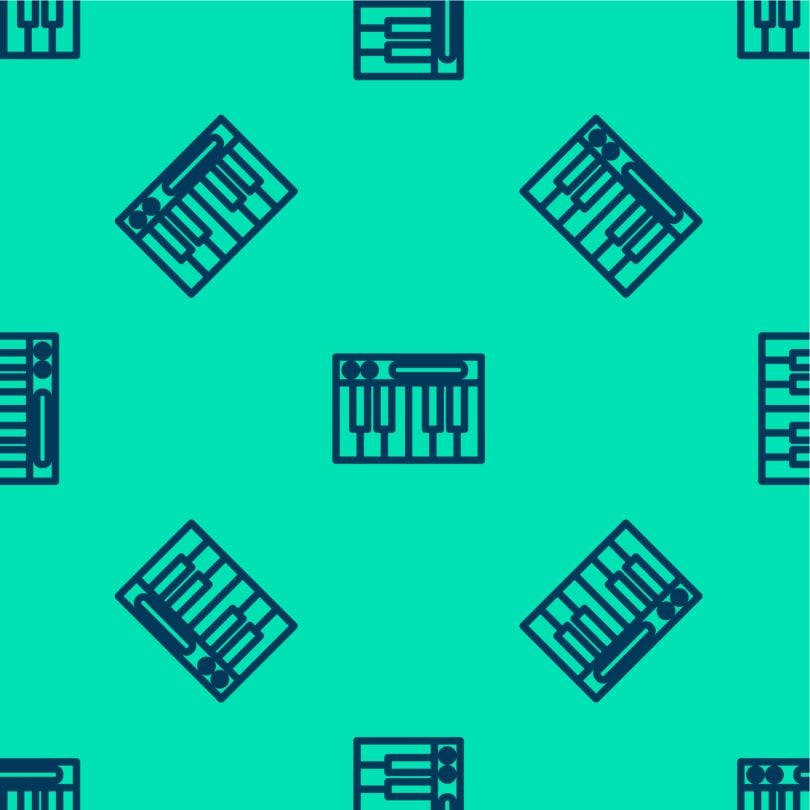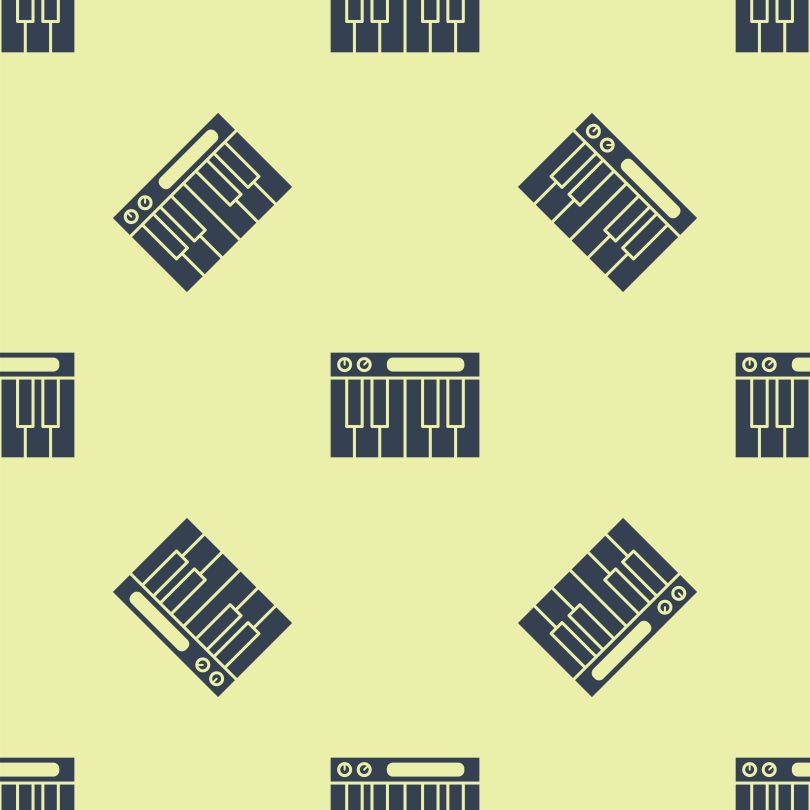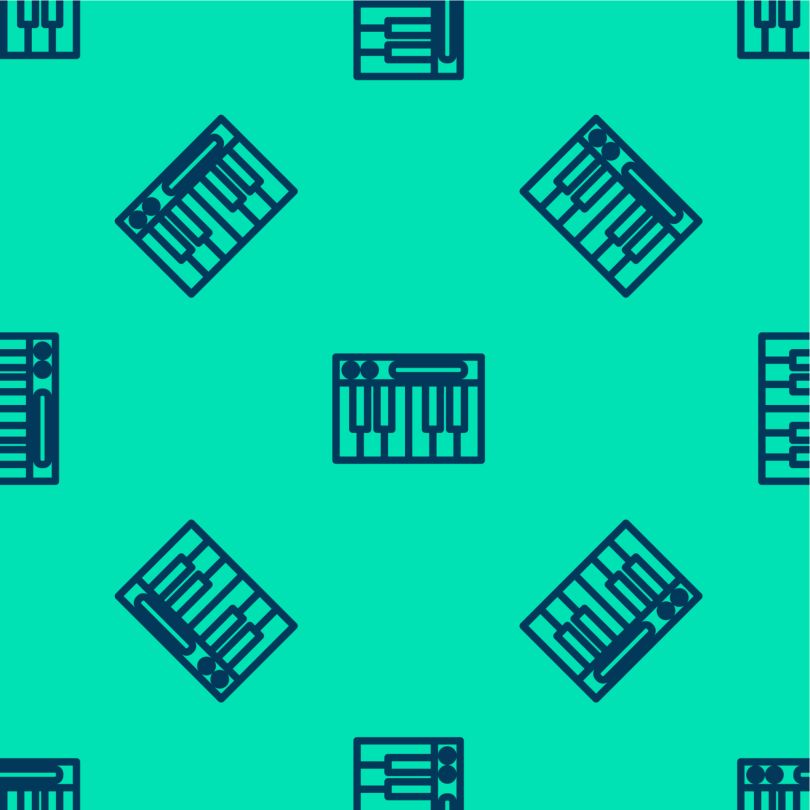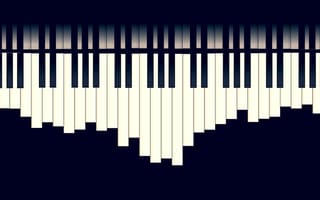I’ll admit I was reluctant to pay money for an app to learn piano.
There are countless videos on YouTube that can walk you through popular songs. I’d learned to play guitar by strumming along to CDs, buying fake books and fumbling through Pixies and Yo La Tengo songs. Couldn’t I apply the same method to piano? Or, better yet, find a teacher to come to my house once a week?
The short answer is no. At 43, I’m a lot busier than at 16, and sight reading sheet music is very different from following a chord chart or plowing through a four-on-the-floor, three-chord rock song.
The reality is I’d never learned how to read music, and when I saw an app backed by jazz musician Harry Connick Jr. and Quincy Jones, the 28-time Grammy award winner who co-produced many of Michael Jackson’s albums, I was willing to throw down $17.99 per month to give it a try.
Playground Sessions, like Flowkey, Simply Piano and a growing list of music learning apps, allows you to learn how to play by practicing popular and classical songs arranged by internal teams of composers.
“Nine out of 10 people who pick up a new instrument quit within 60 days. As the founder, I was very interested to solve this problem.”
The app got its start in 2013 as part of an incubator project led by CEO Chris Vance, then-managing director of Zag — a brand invention arm of the digital creative agency Bartle Bogle Hegarty — where he was tasked with “launching products the world needed.” A piano learning app fit the bill, not only because of Vance’s personal interest (he’d tried and failed to learn piano three times), but also because traditional methods didn’t appear to him to work very well.
“Nine out of 10 people who pick up a new instrument quit within 60 days,” Vance said. (He may be loosely citing a Fender survey that found that 90 percent of first-time guitar players abandon the instrument in the first year.) “As the founder, I was very interested to solve this problem. There’s such a strong human desire to want to express yourself through music and play instruments, right?”

We’re probably hard-wired for music
It certainly seems that way. A study published in Nature Neuroscience, as reported by Vox, found “that dopamine release is strongest when a piece of music reaches an emotional peak and the listener feels ‘chills’ — the spine-tingling sensation of excitement and awe.” Elena Mannes, the author of The Power of Music, in an NPR interview said infants prefer “consonant intervals, the smooth-sounding ones that sound nice to our Western ears in a chord, as opposed to a jarring combination of notes.” Other studies have suggested we are innately drawn to musical patterns and that musical tones are an early surrogate for speech.
But whatever the reason we’re drawn to music, we don’t do particularly well learning to perform it. We don’t have good teachers. We play the wrong notes. The piano bench feels like a church pew. Sheet music reads like hieroglyphics. A quick survey of Quora shows dozens of reasons people quit.
That’s part of the reason Quincy Jones, when he reportedly saw an ad for the Rosetta Stone at an airport kiosk, wondered where the educational equivalent was for aspiring musicians; there had to be a technological tool to make music more accessible and easy to learn. “And somebody, fortunately for us, had heard about our startup in New York,” Vance said.
Soon Jones was involved in the app design as a sort of high-level advisor. In a rapid-fire app development landscape, where a jumble of cascading features can quickly encroach on a simple idea, Jones was often the voice of restraint. “He was great early on, on some of the big decisions, and how design should stay out of the way. You don’t want to have too many distractions. Quincy was very good at saying ‘music is the biggest reward,’” Vance said.
Music-learning apps are on the rise
Over its history, the app has done remarkably well, with an estimated 1.5 million practice records per month, 20,000-30,000 monthly active users and a 50 percent retention rate after 18 months. To date, Vance says, the app has done roughly $10 million in sales.
Other music learning apps are also thriving. The Berlin-based Flowkey, profitable since 2016, reports a catalog of 1,500 songs and a platform translated to 10 languages. Simply Piano by JoyTunes, recognized as an Editor’s Choice in the App Store, claims more than 10 million downloads, one million weekly users, and usage by 10 percent of U.S. music teachers.
There appeared to be something more than celebrity bona fides behind these numbers — a way in which high-production video tutorials, vast song libraries, instant feedback, and simple arrangements were being assembled into satisfying user experiences.
I reached out to Jason McAffee, a senior software developer at Playground Sessions who is leading the effort to retool the app for a spring mobile launch. Years ago, we played ear-splitting rock music together in a band in Columbus, Ohio. Now he’s a Buddhist living in Salt Lake City, following the eight-fold path. I figured he’d have some answers.

Heavy on the empathy
There’s something to be said for human connection. Open the first video tutorial in the Rookie tour, and there’s Harry Connick Jr. seated beside a grand piano in a cozy white living room, smiling warmly, his body turned casually toward the camera. Even for those not enamored by star-power, it’s hard not to be charmed.
“For some of you watching today, the piano may look a little intimidating, and I can be honest with you: When I first started playing, it was really intimidating for me too,” he says. Later, he remarks that, if stranded on a desert island, he would bring a piano before, maybe, food and water. Then, counting his fingers, he says, “There are only 12 notes.”
Twelve? Though I knew this already, it was comforting to hear. I felt like I’d made a new friend, a three-time Grammy award-winning friend, who would be there, if only in a one-way conversation, to support me.
McAffee says that’s no accident: “The very first thing you see in our app is an intro with Harry Connick Jr.,” McAffee says. “So he does this, like, 30-minute intro, which is just fun to watch. His mannerisms are just so entertaining, even, like, memorable and innocent.”
Onboarding complete.
A quasi-ensemble with John Lennon
Immersion is key to creating an appealing user experience, McAffee said. As a backing track plays, a cursor scrolls across the screen, following sheet music of simplified song arrangements — from Beyonce to Sam Smith to Bach — progressively scaled in difficulty. You may only be playing one note per measure, but you’re playing along.
“It’s like you’ve actually accomplished something in a really short amount of time,” McAffee said. “That aspect, I think, is crucial.”
“It’s like you’ve actually accomplished something in a really short amount of time.”
Song tutorials offer lessons in rhythm, melody, sight reading and finger position. There’s real-time feedback when a user is playing: a green light for correct notes, a red light for flubs and a feature Jones stridently pushed for: a pink light, for a note close to the correct pitch. After all, as Thelonious Monk said, “there are no wrong notes. Some are just more right than others.”
Users will find gamified elements too: you earn points for passing through lessons, and can win badges, like “It Goes to Eleven,” for accuracy in practice segments. By racking up points, you earn free song credits and unlock new courses.
But the real reward, McAffee says, is the music itself: being part of a quasi-ensemble and hearing yourself as a performer of an iconic song. Within a few weeks, I was playing “Imagine” — not the John Lennon version, mind you — but a recognizable portion of the song presented in a simplified, melodic structure.
I was beginning to understand why so many users were getting hooked. In software circles, they have a name for this habit-forming phenomenon: “stickiness.”

User-interaction context is a really big deal
Mobile-first design — creating UX wireframes and flow charts for a mobile app first, then expanding to tablet and desktop — is considered a best practice when designing an app. But McAffee acknowledges the approach can be expensive and labor intensive because of the need to hire separate developers for Android and iOS-specific languages.
The most obvious alternative isn’t great either. The first time Playground Sessions attempted to take its web-based platform to Android, in 2016, it failed, abandoning the project in its beta stage.
McAffee hopes to avoid both these scenarios with a hybrid design that enhances a web-based HTML base layer with a native shell for aesthetics and functionality. “So you have a native wrapper to launch the application and basically host what’s called a web view, an embedded browser rendering all the screens,” McAffee said.
In preparation for the relaunch, he’s also been paying close attention to what he calls the “user interaction context;” an industry catch-all to describe the ways a person engages with an app in the physical environment.
“Users should not be worried about how to navigate back to the courses page when they’re learning how to play a Beatles song.”
Because the app uses the digital interface MIDI to detect sound, the user’s iPad or mobile device must be connected to an instrument. Many music apps use polyphonic pitch detection to eliminate the need for MIDI plug-ins, but McAffee says this algorithmic method of acoustic tone detection is prone to error and the subject of frequent user complaints.
“Mono pitch is super simple. But then when you have more complex pieces, the software starts failing. And if you look at their support and feedback, it’s, like, ‘get a MIDI keyboard.’”
That’s why Playground Sessions forgoes the cordless approach altogether. “With MIDI, you don’t have to worry about using artificial intelligence to detect the ambience of the room and the reflection and the echoes and the timber of your instrument. You can just plug it in.”
Getting rid of the noise
Like Jones, McAffee has been adamant about keeping the interface uncluttered and hiding less relevant content in fly-out menus. A Facebook page, online customer reviews, and automated tools like Mixpanel and Google Analytics help validate the team’s intuitive assumptions about which features are most relevant to users, but, in general, less is more.
“Music notation is hard enough as it is and [the environment is] really noisy. You’ve got chord charts, you’ve got standard notation, guitar tablature, fingering positions. So when the user is practicing, we want to keep all other distractions out of the way. Users should not be worried about how to navigate back to the courses page when they’re learning how to play a Beatles song,” McAffee said.
The challenge of squeezing an already robust content package onto a mobile screen has only intensified his push for minimalism. “We’re questioning everything. Like, when you’re practicing, do you really need to have a metronome in toggle on that page?’ Do you need to have your account in toggle on that page?’”

Competing against free, or in-person options
User experience is important but it’s not everything. It remains an open question who will win out among a list of music tech competitors vying for market share, and whether fee-based learning platforms will ultimately make music more accessible to newbies and more advanced players.
Jason Lewis, a tech critic and host of the podcast Painfully Honest Tech, who I spoke with by phone, is of two minds. “The weird thing is if you’re savvy enough on YouTube, there’s a deep pool of educational stuff that advises people for free. And unless you live in the woods or something, there’s a local piano player you could learn from as well.”
“If we could say we have everything that you can imagine versus, you know, these 500 songs that we just so happen to license, I think that could be more appealing for users outside the mainstream.”
Yet Lewis, who performed in the New York-based alt-country band Star City in the late ’90s and early aughts, sees value for those at the intermediate level, “once they know the lingo and have their chops built up,” especially the kind of “person who likes to methodically go through the steps of things.”
The dominance of Spotify’s streaming model, which pays rights holders a fee of $0.006 to $0.0084 per stream, is another auspicious sign. Currently, Playground Sessions purchases song rights through publishing companies via an aggregator. But a model that pays artists largely on usage stands to lower content costs and significantly increase title availability.
“That could be good for us, right?” McAffee said. “If we could say we have everything that you can imagine versus, you know, these 500 songs that we just so happen to license, I think that could be more appealing for users outside the mainstream.”
Meanwhile, Vance is keeping a close eye on competitors, several of which have already launched mobile apps.
One of them is Flowkey. Christian Haug, the engineering lead for the 35-person firm, says the company’s mobile app has a touch-responsive zoom feature that can shrink or expand sheet music or videos (think Google Maps), and a preview mode, which, like Spotify’s, allows users to listen to song snippets before making selections. He adds that the company recently consolidated its code base, piggybacking off documentation in Apple’s UI Kit to write an open-source code that performs well across platforms.
Then there’s Simply Piano by JoyTunes, a darling of design award juries, which is rapidly expanding its mobile offerings and boasts an on-screen piano and option to create multiple user profiles.
Nevertheless, Vance believes Playground Sessions is well-positioned. “There’s a reason why people struggle so much with music, and it’s not just interface design. It’s because it’s hard. So we spent a lot of time arranging the music in a way that’s digestible, that’s achievable, so people don’t get frustrated or disappointed. We have great video content with great teachers that really is unique.”
That may be why I’m still spending my evenings with Harry.




